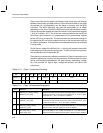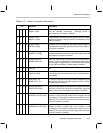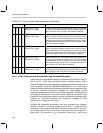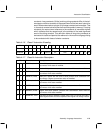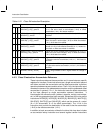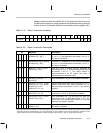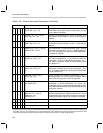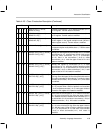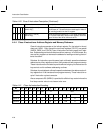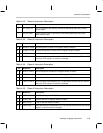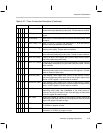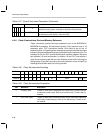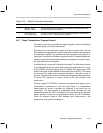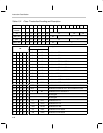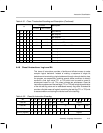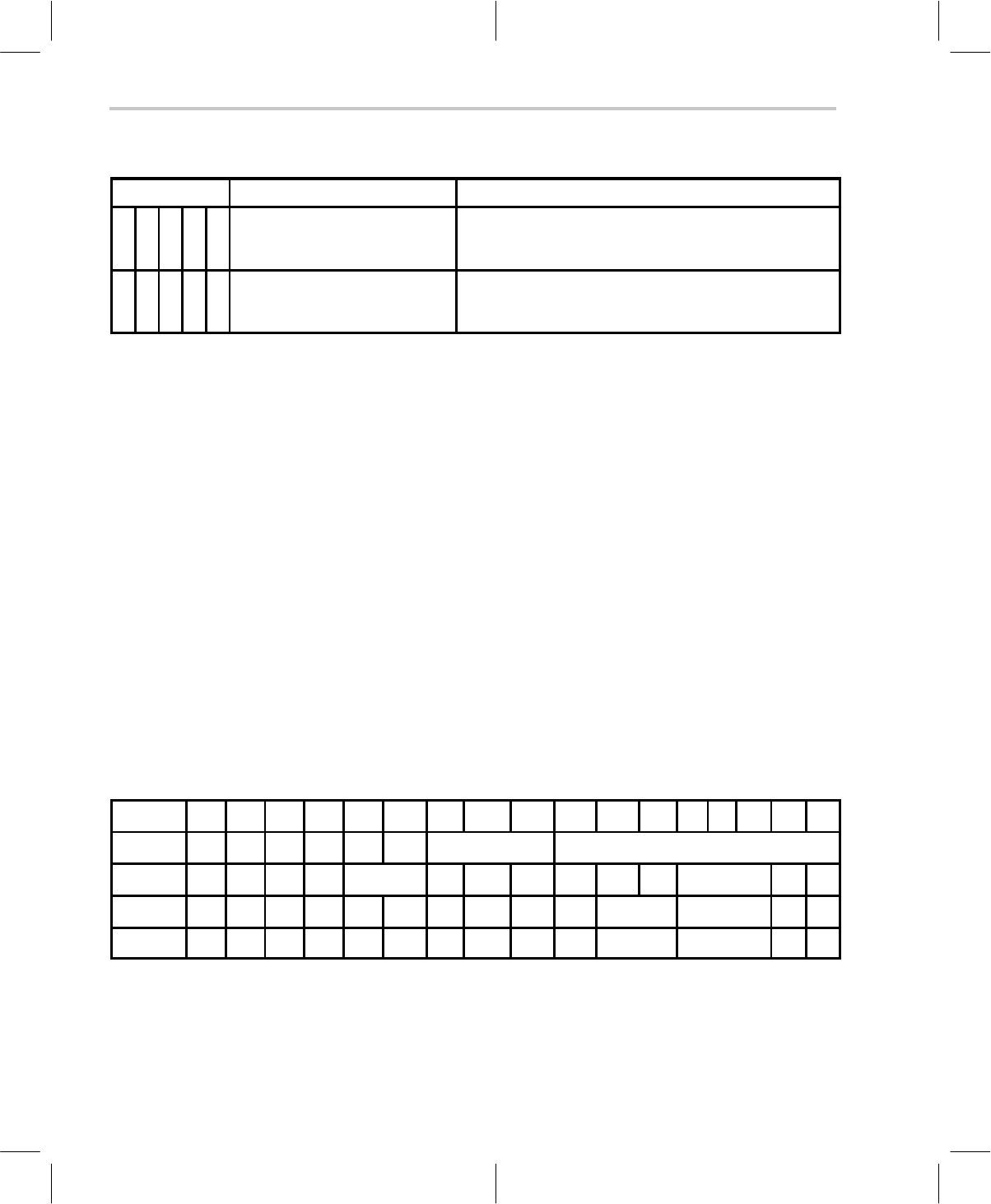
Instruction Classification
4-34
Table 4–20. Class 3 Instruction Description (Continued)
C3 Mnemonic Description
1 1 1 1 0 MUL An[~] [, next A]
MULS An[~]
Multiply MR register by accumulator (A~=1) or offset
accumulator (A~=0) and latch the rounded upper 16 bits of
the resulting product into the PH register.
1 1 1 1 1 SHL An[~] [, next A]
SHLS An[~]
Barrel shift the accumulator (A~=1) or offset accumulator
(A~=0) value n bits left (n stored in SV register). Store the
upper 16 bits of the 32-bit shift result to PH.
4.4.4 Class 4 Instructions: Address Register and Memory Reference
Class 4 instructions operate on the indirect register, Rx, that exists in the ad-
dress unit (ADU). Even though the last three registers (R5–R7) are special
(INDEX, PAGE, and STACK), class 4 instructions uniformly apply to all regis-
ters. Subclass 4a provides transfers to and from memory. In indirect mode, any
one auxiliary register can serve as the address for loading and storing the con-
tents of another.
Subclass 4b instructions provide some basic arithmetic operations between
referenced auxiliary register and short 8-bit constants from program memory.
These instructions are included to provide efficient single cycle instructions for
loop control and for software addressing routines.
Subclass 4c provide basic arithmetic operations between the referenced auxil-
iary register and 16-bit constants from program memory. These instruction re-
quire 2 instruction cycles to execute.
Also a compare to R5 (INDEX) is provided for efficient loop control where the
final loop counter value is not chosen to be zero.
Table 4–21. Class 4a Instruction Encoding
Bit 16 15 14 13 12 11 10 9 8 7 6 5 4 3 2 1 0
Class 4a 1 1 1 1 0 C4a R adrs
Class 4b 1 0 1 1 C4b k4 k3 k2 k7 k6 k5 R k1 k0
Class 4c 1 1 1 1 1 1 1 0 0 0 C4c R x x
Class 4d 1 1 1 1 1 1 1 0 0 1 C4d R x x



